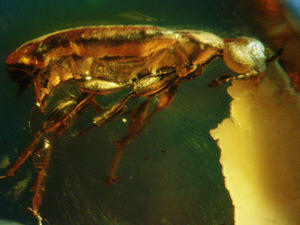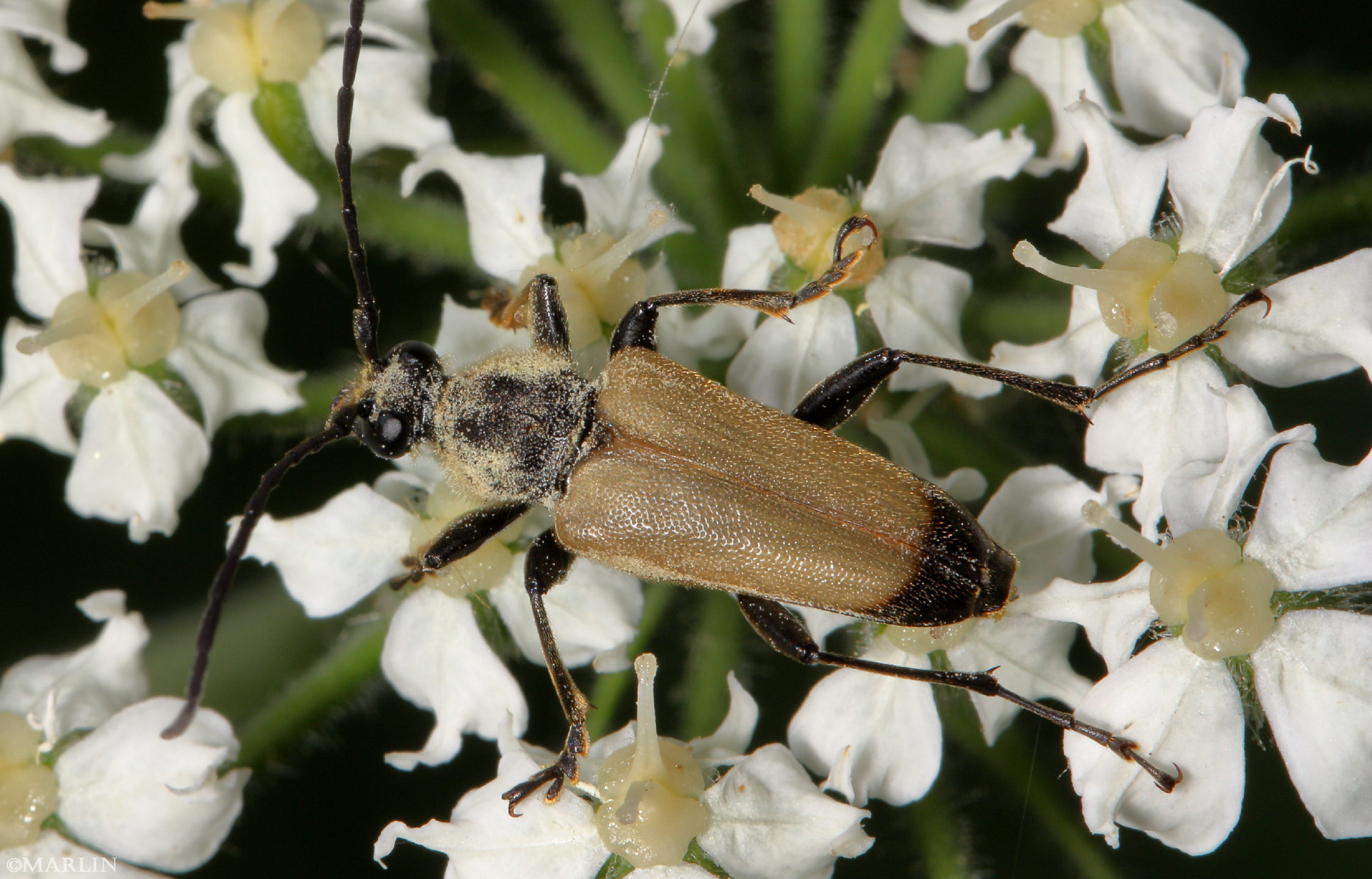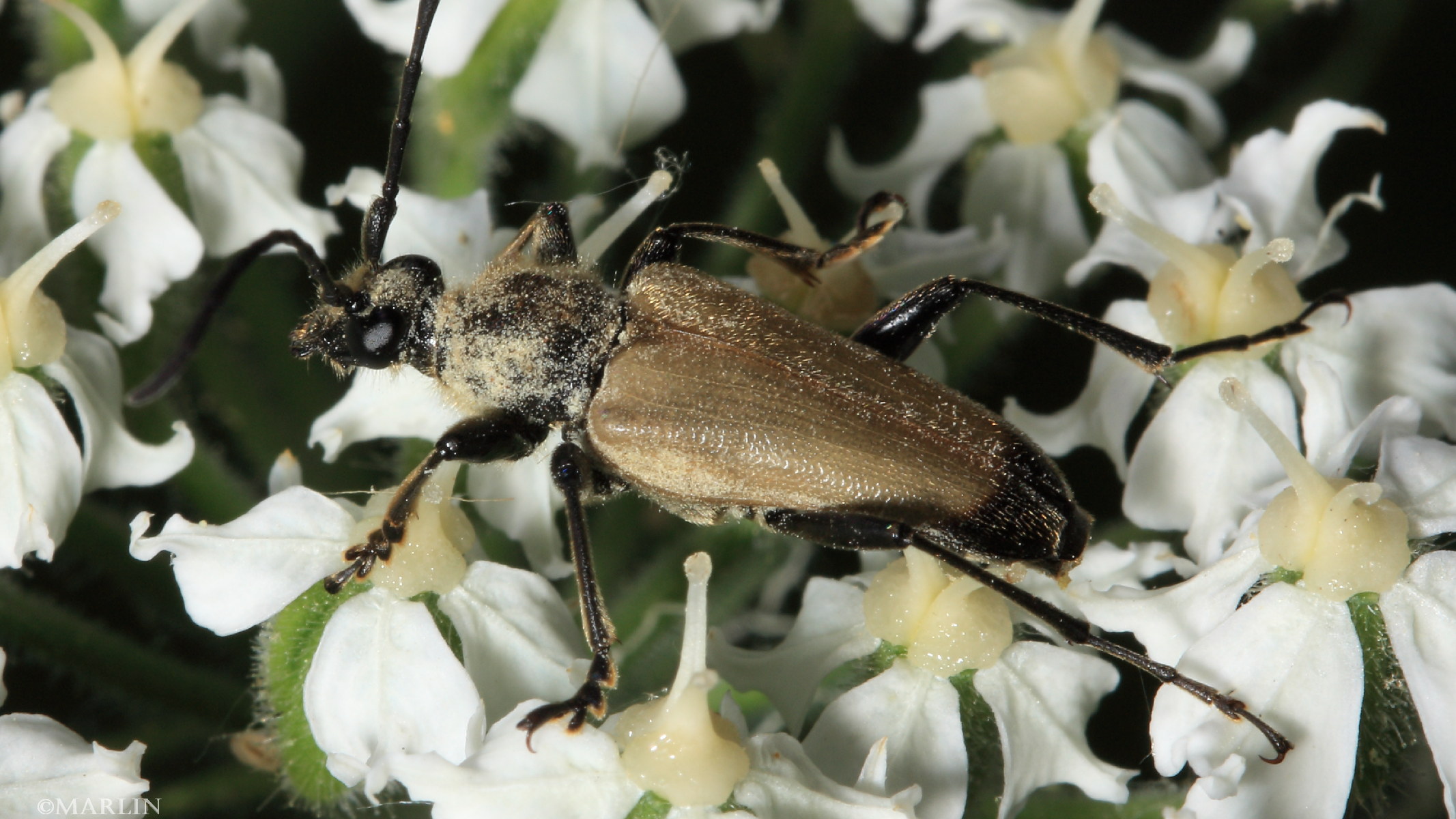Flower Longhorned Beetle – Trigonarthris minnesotana
Family Cerambycidae – Longhorn Beetles
Live beetle photographed at White Pines Forest, Ogle County, Illinois. Size: 18mm
When the first settlers arrived in Ogle County, Illinois in the early1800s, they found a pristine, 700-acre stand of white pines along the confluence of what they named Spring and Pine Creeks. It is here, at White Pines Forest State Park, amidst the remnants of what was then an unusual southern extent of the eastern white pine species Pinus strobus that I found these lovely beetles.
17mm long with antennae at least that, this impressive creature is member of a subfamily commonly called flower longhorns, after their habitat and principle food source. Sunfamily Lepturinae has about 360 species in 80 genera in the New World. Adult beetles eat pollen. Beetles have been pollinating plants for much longer than any other insect.
The comparatively narrow pronotum and tapered elytra give this subfamily its characteristic broad-shouldered look. The eyes are much larger and more bulbous, and they do not wrap around the antenna base like many other longhorn, i.e. the red milkweed beetle. [2]
With over 20,000 species described, Cerambycidae is a large family. Many are serious pests, with the larvae boring into wood, where they can cause extensive damage to either living trees or untreated lumber, and adult beetles feed on various plants, sometimes causing grave harm. A number of species mimic ants, bees, or wasps (see Locust Borer).
 |
The genus Magnolia contains about 200 species of flowering trees and shrubs, with innumerable cultivars and varieties. Magnolia is an ancient plant lineage, first appearing in the fossil record about 20 million years ago, while evidence of plants in the family goes back to 90 mya [2]. Beetles evolved before pollinators in Hymenoptera (bees, wasps & ants), and the progenitors of our modern ornamental magnolias relied on them for their sexual gratification. Their large, showy flowers are a direct result of the plant’s strengthening its delicate flower parts against the beetle’s comparitively “rough handling” while feeding on pollen. Left: Primitive beetle ancestor inside 50 million year old Baltic amber [4]. |
References
- Douglas Yanega, Field Guide to Northeastern Longhorned Beetles
- Wikipedia contributors, “Magnolia” retrieved April 19, 2012
- www.efloras.org, Flora of China, “Magnoliaceae“
- Anders L. Damgaard, File:Baltic amber Coleoptera Scraptiidae.JPG under Creative Commons 3.0
Beetles Main | Beetles Index | Longhorns | Leaf Beetles | Soldier | Blister | Lady | Scarab
Tree Encyclopedia / North American Insects & Spiders is dedicated to providing family-friendly educational
resources for our friends around the world through large images and macro photographs of flora and fauna.


